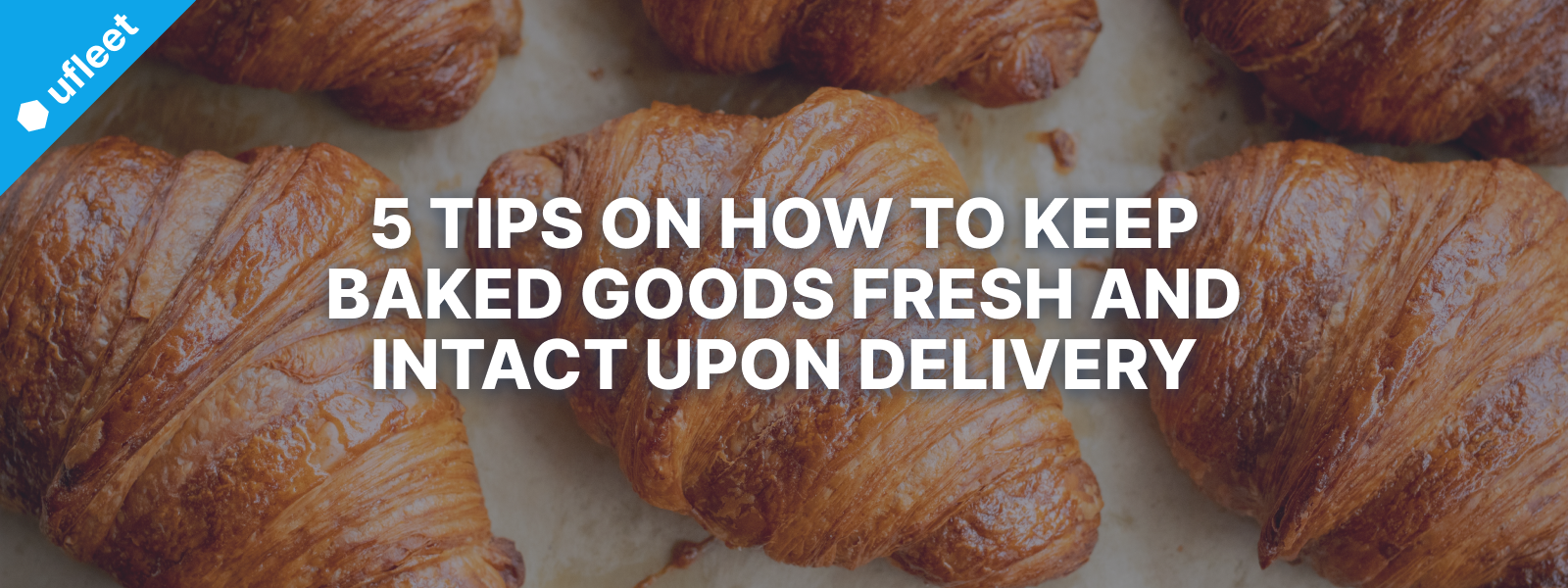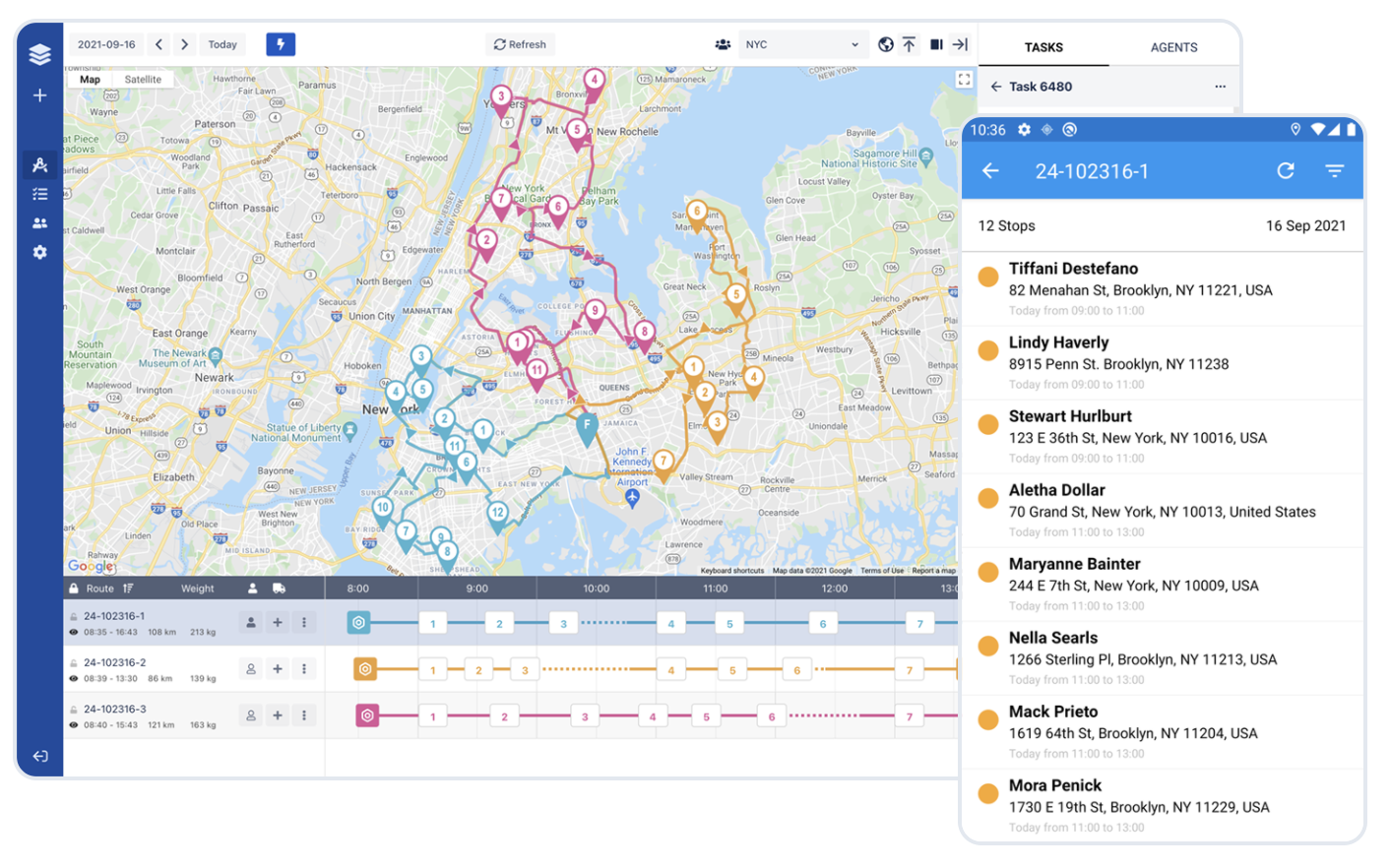The right packaging materials, timely delivery, clear instructions, and separation of flavours and allergen products are essential elements for success.
5 Tips on How to Keep Baked Goods Fresh and Intact Upon Delivery

You spent hours in preparation and you poured all your heart into this delightful and mouth-watering cake. Or macarons. Or croissants. You name it.
Each slide of luscious strawberry on top has its purposeful placement. Each swirl of whipped cream is exactly the size it should be. So tasty! Without a doubt, it must look and taste exactly the same when delivered to your beloved customers.
In this blog post, we’ll help you learn how to keep baked goods intact when shipping. We’ll cover:
- What are the common challenges when shipping baked goods
- Why investing in the right packaging materials is worth it
- Why you should make timely delivery a priority
- Why clear shipping and handling instructions are a must
- Why to keep flavors and allergen products separated
- Why communication with customers is key to excellent delivery
- Some bonus packaging tips
Let’s dive right in.
Common challenges when shipping baked goods
Baked goods (cakes, pastries, cookies, croissants, macarons, bread, etc) share a few common delivery challenges:
- Product fragility and freshness: Bakery items are delicate and have a short shelf life, making them susceptible to damage during transit.
- Product presentation: Maintaining the visual appeal of bakery items during delivery is challenging, especially for items like cakes with intricate decorations.
- Delivery time sensitivity: Some bakery items, such as breakfast pastries and fresh bread, have specific delivery time sensitivities for customers who expect them early in the morning.
Tip 1: Chose the right packaging materials
Using suitable packaging materials is the cornerstone of the successful shipping of baked goods. Opt for materials that guard against external factors such as temperature, humidity, and compression.
Here are some suggestions:
- Insulated packaging with ice packs
- Temperature-controlled packaging
- Sturdy cardboard boxes
- Internal dividers or supports
- Tin boxes for delicate treats
- Food-safe plastic containers
- Cake boards or bases
- Cake carriers (possible in some cases)
- Freshness-sealing plastic wrap
- Plastic or tissue bags for individual items
- Moisture-resistant packaging materials
Keep in mind you might need to get custom packaging in some cases - for example, if your products have a specific shape (a chocolate sphere dessert) or an element that’s prone to deformation (cupcake topper).
Tip 2: Make timely delivery a priority
When it comes to perishable items, time is crucial. Some bakeries, for example, offer overnight delivery, granting customers the pleasure of receiving their orders fresh in the morning.
You have a few options for shipping:
- Running deliveries in-house: Bakeries often choose to manage their deliveries in-house, as this allows them to own the entire delivery process. It can also be a way to strengthen the connection with your customers. The downside is that you need to have dedicated personnel and invest in route optimization software if you want to be efficient.
- Third-party services: Couriers like UPS, USPS or other local providers have high expertise and can handle a huge amount of orders so they know what they’re doing. They also have a bigger geographic reach. The downside is you do not own the delivery process and don’t have communication with your customers.
Both have their pros and cons. To choose wisely, consider your business needs, resources and goals.
Tip 3: Be clear with shipping instructions
This one is valid especially if you rely on third-party delivery providers. By providing clear shipping and handling instructions, you can empower shipping personnel to handle the packages with the necessary care and attention.
This results in a higher chance of the baked goods arriving at their destination unharmed, preserving their visual appeal, taste, and overall quality.
Here are a few examples of shipping and handling instructions:
- Proper handling: Instructions like “Fragile” and “Handle with care” are essential for almost all baked goods.
- Orientation: “This side up” is necessary when shipping cupcakes for example.
- Temperature awareness: Instructions like “Keep Refrigerated", "Do Not Expose to Heat" or “Avoid Direct Sunlight” will prevent perishable items like chocolate from melting.
- Compression: Instructions like "No Weight on Top" will keep prone-to-deformation products like multi-layered cakes safe.
Tip 4: Keep flavours and allergens separated
Certain baked goods, such as strongly flavoured items like garlic bread or savoury pastries, can impart their taste and aroma to nearby items during transit.
By avoiding mixing such items with delicate or sweet baked goods, the bakery preserves the integrity of each item's distinct flavour profile.
Some customers may have dietary restrictions, allergies, or preferences that require special attention (gluten, nuts, dairy). Separating items prevents cross-contamination and allows the bakery to accommodate such requests more effectively.
To implement an effective avoidance of mixed shipment, you can consider the following steps:
- Categorize baked goods based on flavour profiles, textures, and potential for contamination.
- Train packaging personnel to separate and group items appropriately during the packaging process.
- Use dividers or packaging compartments to keep different items separate within the shipping box.
Tip 5: Communicate with customers
Effective communication with your customers can be a game-changer when shipping baked goods. Consider implementing a few key strategies:
- Order Confirmation: Send an immediate order confirmation email or message upon receiving the order, reassuring customers that their request is in process.
- Tracking Updates: Provide real-time delivery tracking and timely updates as the order moves through the delivery process, so customers can anticipate the arrival.
- Delivery Notifications: Send a notification when the delivery is on its way, allowing customers to plan accordingly and be ready to receive their treats.
- Feedback Channel: Encourage customers to share feedback and contact you in case of any concerns. Swiftly address any issues that may arise.
Clear and open communication not only enhances customer trust but also allows you to address any problems promptly, turning a potential issue into an opportunity for excellent customer service.
If you manage your delivery in-house, at Ufleet we can help with all these. Our Customer Portal page will provide you with an overview of what we can do for you. If you'd like to learn more, watch the video below.
Bonus packaging tips
- Bread: Wrap freshly baked bread in breathable, food-safe paper bags to maintain its crust while preventing moisture buildup. Use overnight delivery to preserve the bread's crust and texture.
- Pastries: Use clamshell containers or bakery boxes with secure lids to protect delicate pastries like croissants, muffins, and danishes from damage and keep them fresh.
- Cakes: Place cakes in sturdy, cake-specific boxes with tight-fitting lids to prevent them from shifting during transport. Add support inserts to keep multi-tiered cakes stable.
- Cupcakes: Use bakery boxes with individual compartments to prevent cupcakes from smudging or colliding with each other.
- Cookies: Package cookies in resealable, airtight bags or tissue paper to maintain their texture and prevent them from becoming stale.
- Brownies: Wrap individual brownies in parchment paper and place them in bakery boxes for easy handling and protection.
- Cream-filled pastries: Use insulated bags or containers with ice packs to maintain a cool temperature during warmer weather.
- Chocolate creations: Use insulated packaging with ice packs during warmer months to prevent their chocolates from melting en route to customers.
Key takeaways
When delivering baked goods, preserving the quality, taste, and visual appeal of your creations is paramount.
Common challenges include fragility, freshness, and specific delivery time sensitivities. The right packaging materials, timely delivery, clear instructions, and separation of flavours and allergen products are essential elements for success.
Moreover, effective communication with your customers plays a pivotal role in creating a seamless and delightful delivery experience. From order confirmation to tracking updates and personalized touches, maintaining transparency and engagement fosters trust and customer loyalty.
If you found this post helpful, subscribe below to receive similar insights straight in your inbox.❤️✉️
Never miss a post
You may also like…
You too can reduce costs and improve efficiency with Ufleet
- plan and optimize delivery routes
- manage and empower drivers
- enhance customer experience
- make data-driven business decisions
We’d love to learn about your challenges.
Leave your email and we’ll get back to you.





